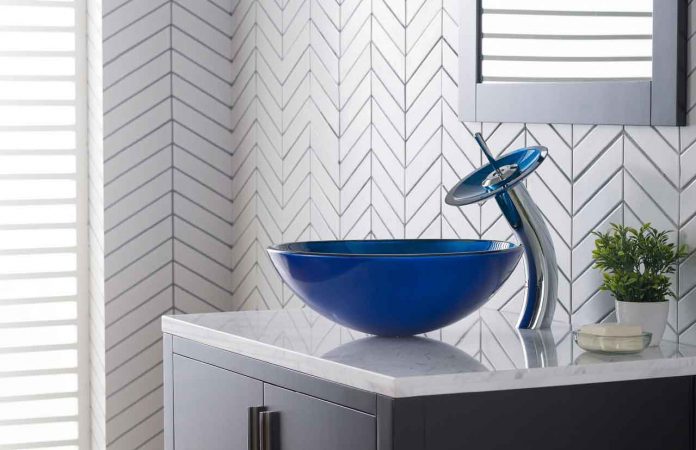Every element of the home design and décor stands out for its ability to define the aura of your cocoon the way you imagine. You want to pay attention to each of them to create the right effect. Tiling projects are one strong example of this. You get so many options that it can be challenging to choose one over the other apart from the point of view of the budget. If something is out of range, you may not even turn to it unless your finances suddenly grow or you like that specific choice the most. These are rare occurrences, though. Usually, such situations require exploring alternatives. So, let’s figure out the popular options once.
The common ceramic tile
The durability of this material makes it an ideal partner for different environments like kitchens, entryways, and bathrooms. You get various styles in this category, and easy maintenance can make it more appealing. Many budget home improvement projects rely on this. Just make sure you know about the difference between glazed and unglazed surfaces. Glazed tiles can protect your flooring for years, while unglazed variety can best incorporate any rustic or artistic touch.
The minimalistic glass tile
Do you want to reduce your maintenance burden by switching your natural stone for something better? Glass tiles can be the answer. The glass tile will be forgiving if you spill vinegar, lemon juice, or red wine on the floor. You can wipe the spill without fearing staining issues. However, this material can chip quickly around the edges. Due to this, places like bathrooms and kitchens can be out of bound. You can reserve this variety for small applications or less busy corners, such as fireplaces, tabletops, desks, backsplash, etc.
The rustic limestone tile
This natural stone variation oozes a rustic vibe through its tones and shades. You can use it to create old architectural charm. Since this durable stone is soft, you can create many patterns effortlessly. However, as you know, it is porous. If you want to keep it healthy for a long time, sealing the tile from time to time is crucial. Another critical area is maintenance. You cannot use harsh cleaning agents on the surface. Nevertheless, this can be a fantastic addition to outdoor areas like a patio.
The unique travertine tile
Again, this natural material is aesthetic. The soft and subdued color tone of the tile can mesmerize anyone. The tile can make your surface a statement whether you want beige, tan, or gray. Of course, stains and water are its main enemy. You will want to protect it by resealing the surface occasionally and putting extra effort into maintenance. Designers advise this tile for low-traffic areas. If you choose this, you can apply it on walls instead of flooring.
The brick-like quarry tile
Obtained from ground materials close to brick, such as clay, shale, and feldspar, it builds a firm base. Due to exposure to high temperatures for baking purposes, quarry tiles can prevent damping issues too well. You can find them in a natural and glazed finish. Some people choose this tile to get rid of sealing problems. Nevertheless, this tile is not stain-resistant. Hence, it is better to avoid its use in the kitchen. Other high-traffic sites can welcome this material quickly for its non-slippery trait.
The stylish resin tiles
There is more good news if you are a DIYer. Do you wish to carve a stylish corner? These water-resistant tiles can help. You can create different patterns through this. For instance, it can replicate the appearance of stones and water if you wish. Chipping and yellow stains are two main challenges with this variety. The risk is higher during sun exposure. As a result, it can be a great addition to damp environments of mudrooms and bathrooms. You can build a backsplash also with this tile. Make sure it does justice to the size of a countertop sink.
A few tile secrets for small spaces
Homeowners often need help choosing the tile size for smaller bathrooms and living areas. Designers say you don’t need to worry about this because every house contains a smaller unit. Just because of its size, the specific room should not suffer, whether it’s the most used or ignored corner. Wood planks, square tiles, and rectangular shapes can suit these nooks. If you have a tiny bathroom, you can choose rectangular tiles and install them horizontally or vertically based on the overall décor. Homeowners who go with square designs select larger varieties exceeding 4×4 and 6×6. Choose from glossy to polished surfaces and install them diagonally. When you set square tiles diagonally, you enjoy a sense of spaciousness. The overall impact can be beautiful.
Generally, decorative patterns don’t make a strong case because of the risk of lending your bathroom a busy look. Still, one can leverage them to create visual appeal with proper space utilization. For instance, a wall can have patterned white tiles with darker silhouettes, and surrounding areas can mimic their darker tone. It can make the room feel larger. Experts opine that large format tiles can be best for smaller nooks because of the reduced use of grouts.
Do you wonder about living space? Some designers vouch for herringbone patterned wood planks. These can lend unique character to the compact room, creating an illusion of spaciousness. Even narrow designs in large sizes can also do the magic.
Practically, there are many solutions one can apply when decorating an area with tiles. The surface’s finish, the tiles’ size, and the color tones can change the entire vibe. If you doubt your choice or decision, it will be better to consult an experienced interior designer for help. They can create the space per your imagination with the same material with a few tweaks. Or, they can suggest an ideal alternative, keeping your interest, budget, and home décor style in mind. Hence, it can be worth approaching them. At the same time, research some more ideas to understand the scope of the tiling project. Once you know the choices, you can determine your approximate cost for renovation.






